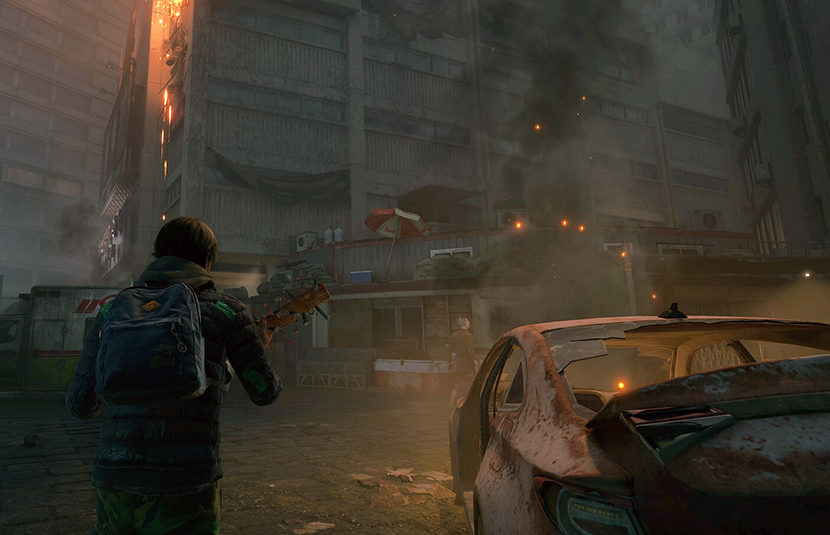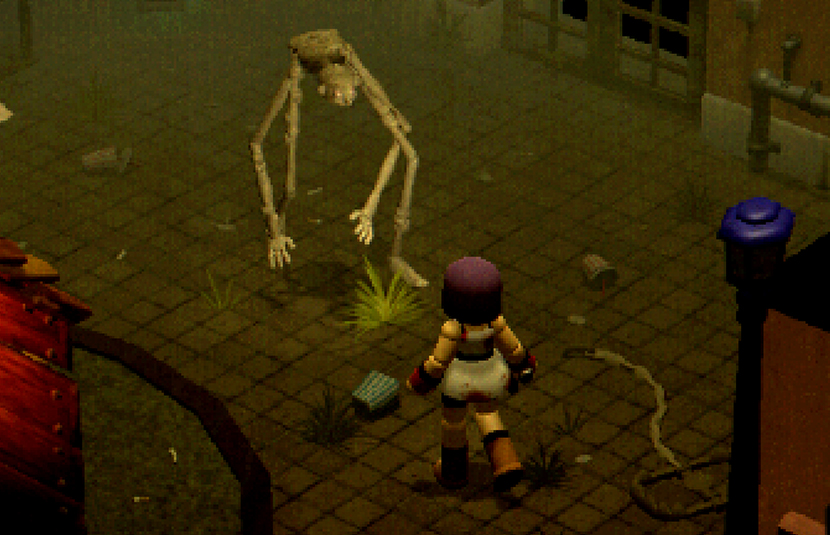Video Games
Pre-Alpha Test for Stealth Horror Game ‘Nakwon: Last Paradise’ Set for November 29 [Video]

Developer and publisher Mintrocket is doing quite the pivot for its next game. From their recent success with Dave The Diver, the team is now going the PvPvE route with Nakwon: Last Paradise, which recently announced a Pre-Alpha Test for those fans looking to smash zombies in a stealth survival setting.
Similar to titles like DayZ, Nakwon: Last Paradise sees players forced to survive post-apocalyptic Seoul, Korea that’s become infested with the living dead. The problem is that there are few guns, and you’re competing against other players to collect items in order to sell them, and get out of the city alive. Alternatively, you can also earn cash by completing missions, but there is that lack of firepower issue. As a result, you’ll need to rely on being stealthy and avoid attracting attention from the zombies or other players.
To give you a sense of what Last Paradise will be like, the team has released a 20-minute gameplay video showcasing the game’s mechanics.
The Pre-Alpha Test for Nakwon: Last Paradise will be free for anyone to join, and is currently set for November 29 on Steam, and will last until December 4. More details will be announced ahead of the Pre-Alpha Test launch, but the good news for prospective players is that there are no restrictions on the number of players joining the test. If you do join the test, you’re encouraged to share feedback with Mintrocket via the Nakwon Discord server, which will also serve as a way for fans to keep tabs on the game’s development.

Reviews
‘Crow Country’ Masterfully Replicates PS1-Era Survival Horror [Review]

I’m always amazed that during the original PlayStation era, we were graced with a pair of survival horror games that would be two very different tonal blueprints for the genre going forward. Resident Evil became the model for the more B-movie route, with gory thrills and eerie mysteries, while Silent Hill would show us something a bit more in the vein of David Lynch, featuring more surrealism and introspection. We’ve had some really excellent Silent Hill-esque ones in the last few years, with standouts like Signalis and Homebody, but I personally haven’t been as grabbed by the ones that try to do Resident Evil.
Crow Country, from the small team at SFB Games, changed that for me.

Crow Country is set in 1990 and casts you as Mara Forest, a young woman investigating the titular amusement park, which mysteriously closed two years prior. Obviously, something sinister is afoot, and Mara slowly uncovers the mystery of the owner’s disappearance as the park becomes increasingly dangerous. It’s a classic setup that plays around with a lot of tropes right from the start, but its compelling combination of graphic style and gameplay makes for something that’s more unique than it lets on.
While there are tons of PS1-style horror games out there, I can’t think of one that looks quite like Crow Country. There’s a softer look to the characters, looking more like big chunky JRPG characters rather than your more blocky but slender traditional survival horror protagonist. It’s an interesting juxtaposition that gives the game an almost more playful tone on top of the sinister aspects, which works perfectly for the chosen setting. As with a lot of these PS1 style games, the lack of detail in the models makes so many of the monsters all the more scary, without losing any sense of the art direction they were going for.

One of my absolute favorite aspects of video games as a medium is the act of learning more about a world through exploration, letting the level design and lore notes create a sense of place. Crow Country excels at that with a well thought-out setting that informs every part of the presentation. Much like a real theme park, the game is separated out into different zones, such as “Fairytale Town” and “Haunted Hilltop,” giving it variety even within the theme park aesthetic. Like many survival horror games, you’ll be doing a lot of backtracking, and this visual distinction helps you with identifying where you are without having to open the map. The documents you find in the game also feel very believable in-fiction, often taking the form of staff memos or notes between workers talking about the weirdness going on or why a certain section is closed down.
The puzzles in the game are universally clever, rarely just taking the form of “find the key and do the thing.” I remember being impressed at an early one involving a graveyard and a compass, which set the tone for the level of problem solving the game would ask of me. A few of them even had me taking notes and calling over my wife to help me talk out the solution. Once again, the game frames these well in-universe. Some of them are presented as fun challenges for the park guests, some of them are about repairing broken down rides, and others are about secrets purposefully obscured by sinister forces in the park trying to cover things up. It’s all so impressively cohesive, taking the outlandish style of puzzles the genre is known for and making them make more logical sense. There’s even a fortune teller machine that acts as an in-game hint system to point you where you need to go or nudge you towards the solution to a puzzle you’re stuck on.

I wish the game had the same amount of cohesion with its monster design, which has some standouts but mostly falls into the fleshy weirdo category. Maybe the theme park setting made me expect monsters a bit more like Five Nights at Freddy’s rather than Resident Evil experiments, so that could be on me. There is one particular design that freaked me out with its wonderful combination of visual and audio design, but most of them felt just like obstacles that I either take out or just dodge around.
Like Signalis, Crow Country does not use the traditional fixed camera survival horror perspective, but instead shows the action from an isometric point of view. One thing that surprised me though was that it gives you the ability to control the camera freely with the right analog stick. Getting a full view of the room is important, as often time notes or clues to puzzles are hidden at an angle that you may not have seen when you entered. You’re given the option of doing tank controls or a more modern control setup by using either the directional pad or analog stick respectively, which is a nice touch to playability while still paying homage to its genre roots.

Combat in the game is a bit clunky, but it feels like it’s intentionally so, and the encounters are designed around it. When you draw your gun, you’re stuck in place, and you can adjust your reticle to try to aim for the head on the approaching fiend. The aiming itself feels a little floaty, but the enemies and environments are laid out with this in mind, so that tension of aiming adds to your decision making when you’re contemplating fight or flight. In traditional survival horror fashion, you’ll have to ration your ammo wisely, as the amount of creatures you run into will exceed the bullets you have for your various guns. Deciding which areas are worth spending your precious shotgun shells to clear out is all part of the fun.
The narrative of the game was surprisingly fun to uncover. Accidents at a theme park. Corporate greed. Sinister coverups. It’s nothing we haven’t seen before, but the way it all comes together is extremely well done, with a great cast of characters that all have their own personality that shines through in their dialog, even without voice acting. The breadcrumbs of the mystery are doled out at a great pace, making you always eager to run into the next character interaction or lore note. It all comes to a dramatic conclusion that was simultaneously expansive for the lore of the game and focused squarely on the character dynamics. While my tastes usually go more towards the Silent Hill spectrum narratively, I thoroughly enjoyed the more Resident Evil style tale that Crow Country weaved.

While the game is about five to six hours in length, there’s good reasons to revisit. It’s a fun, breezy experience that still feels like you’re stretching your brain with both the puzzles and the resource management, and there are plenty of hidden secrets to find. I only uncovered about half of them in my playthrough, which included things like improving weapons or discovering better ones, and the ones I did find were very satisfying to come across. After completing it, you’ll be given a rating screen, and depending on your grade you’ll unlock some extra fun weapons for subsequent playthroughs. If you just want to play through it and focus fully on the puzzles, there’s also an “Exploration Mode” where you don’t have to deal with the enemies, which could be perfect for a run through the game focused entirely on digging for secrets.
Sometimes it’s challenging to review a game like this, because it feels like everything about it is custom built to appeal to me. Gorgeous PS1 aesthetics, classic survival horror puzzles, and a spooky amusement park setting all are right up my alley, but there’s something special about the game that I think would appeal to any fan of the genre. It’s clear that Crow Country is made by people who not only love the classic survival horror genre, but also understand what makes it tick, allowing them to capture that feeling without shamelessly mimicking it. This subgenre is one of my favorites, and I definitely can see myself walking back through the gates of Crow Country any time I need to scratch a throwback itch.
Review code provided by the publisher.
Crow Country is available on the PlayStation 5, Xbox Series and PC via Steam.












You must be logged in to post a comment.